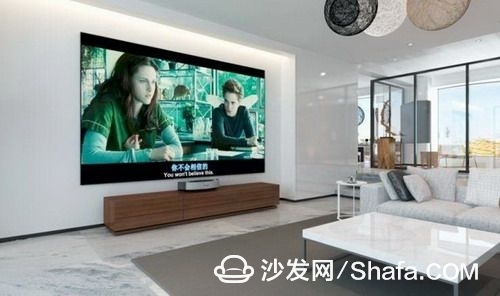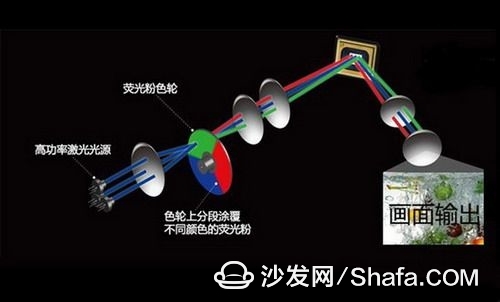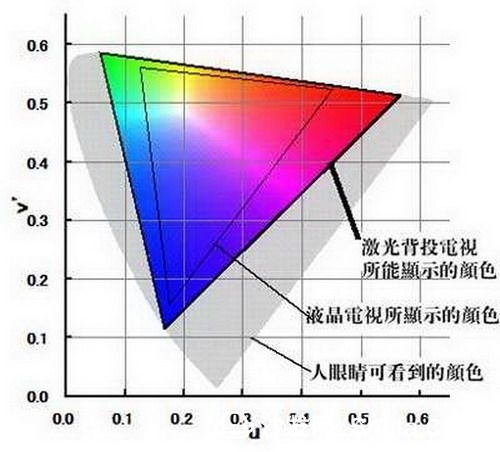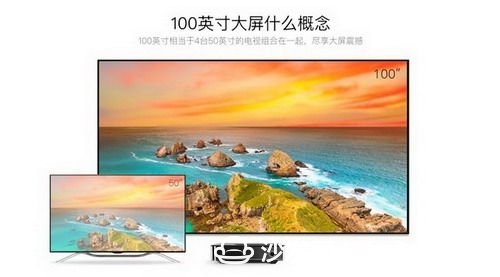Laser TV is not a new concept. In the 1990s, there was a technology prototype. In 2003, laser television prototypes were introduced. However, in the following years, the development of laser television was not satisfactory due to various reasons until 2012. The laser television has rejuvenated its youthful vitality. After several years of development, laser television, quantum dots, and OLEDs have become one-third of the world. 
Although in the wave of display technology, domestic manufacturers are in a state of follow-up, but in the field of laser television, domestic manufacturers have finally seized the opportunity. In 2014 alone, domestic manufacturers such as Hisense, Optoma, Changhong, Hualu, Konka, Meire, and YIdian all launched laser televisions. In 2015, it was known as the "first year of laser projection display." In 2016, it became " No laser is not projected, 2017 is called the "explosion period" of laser television, and the "Laser era" has officially come.
Technical Principle The laser television is composed of two parts: a laser television host and a screen body. The relationship between the two is made up of separable and indispensable. However, at present, it is customary not to name them separately. Generally, they are directly called laser televisions. Unlike projector products, laser televisions use laser as the light source, and no longer need the light bulb as the light source. From the picture below, everyone can understand the working principle of laser television. The first is the use of extremely high power laser light sources that collect more than 100W of light energy per square meter. Intuitively, 100W of light energy is enough to completely melt glass and steel in an instant. Therefore, the high energy density is the key to achieving the high brightness of the laser television light source, otherwise it will not be able to display a picture with sufficient brightness.


High-speed rotation of the pink fluorescent wheel is also essential for laser television. On the color wheel, different colors of fluorescent powder are coated on the segments. When the color wheel rotates at a high speed, different colors of light can be emitted, and we can see colorful images. As we mentioned earlier, due to the presence of high-power laser light sources, it is sufficient to melt the steel instantaneously. Therefore, the high-speed rotation of the color wheel is also responsible for another very important function, that is, to quickly reduce the temperature of the phosphor, so as to avoid damage by high-power laser, has reached the goal of normal light.
Development and Current Situation Transnational color TV companies are playing a role as promoters of laser display technology. In 2005, Sony invested in a giant laser theater with a 500-square-meter giant screen at the Aichi World Expo. In 2006, Mitsubishi launched a 40-inch laser TV prototype. In 2007, Sony again launched a high profile 60-inch laser TV prototype. At the Consumer Electronics Show, Sony and Mitsubishi exhibited prototypes of 55-inch and 40-inch laser televisions, respectively. International companies such as German LDT Corporation, Japanese Sony Corporation, Japanese Mitsubishi Corporation, Panasonic Corporation, Hitachi, Toshiba, Epson, and South Korea’s Samsung Corporation also reported that they have actively researched laser television and laser projection products.

The laser TVs developed by Sony of Japan mainly use “straight scan†and “line scan†methods, while German LDT companies and South Korea’s Samsung use “point scan†methods. The Mitsubishi DLP rear-projection TV using three-primary laser light source supports the international standard of color space. After removing the color wheel, the single-chip DMD chip also has a good color performance. With Mitsubishi officially launching 65-inch and 73-inch laser televisions in the US market in 2008, this marks the global consumer electronics company's fourth-generation television display technology, laser display battle has been fully opened.

2014 was known as the first year of laser television, and it was the first year of 2015. As of 2016, according to relevant statistics, the sales volume of laser projection products in the year was 110,000 units, which was a four-fold increase compared to 2015, indicating that laser projection has entered the gold of all-round development. During the period, 2017 will usher in the explosion of laser television.
Advantages of laser television The “laser†of laser television is 100% monochromatic light. R, G, B three-color light are separately modulated, and the color effect is very ideal. In this way, the color gamut can theoretically exceed 110% of the NTSC color gamut, which is an improvement over the OLED 100% NTSC color gamut. The improvement of the color gamut not only makes the picture look more transparent, more real, and has a sense of depth, but also has a sharp increase in the clarity of the color saturation.
Since the laser TV backlight is R, G, B three lasers, only need a "screen", can be made thinner, suitable for home use. The light of the laser television reaches the human eye through reflection, without flicker, making the light softer and reducing the damage to the human eye.
The screen size of the laser television is flexible and can be projected onto the surface of various materials (curved surfaces can also be used), and can be adapted to almost all television standards such as NC system, PAL system and SECAM system.
Ultra-low power consumption, health and environmental protection. The power consumption of a 100-inch laser TV is only equivalent to the level of a 40-inch LCD TV. The room-temperature lifetime can reach tens of thousands of hours. If you use 10 hours per day, the life of a laser TV can reach 10 years, so it is a kind of Long life and high reliability products.

Technical Principle The laser television is composed of two parts: a laser television host and a screen body. The relationship between the two is made up of separable and indispensable. However, at present, it is customary not to name them separately. Generally, they are directly called laser televisions. Unlike projector products, laser televisions use laser as the light source, and no longer need the light bulb as the light source. From the picture below, everyone can understand the working principle of laser television. The first is the use of extremely high power laser light sources that collect more than 100W of light energy per square meter. Intuitively, 100W of light energy is enough to completely melt glass and steel in an instant. Therefore, the high energy density is the key to achieving the high brightness of the laser television light source, otherwise it will not be able to display a picture with sufficient brightness.


Development and Current Situation Transnational color TV companies are playing a role as promoters of laser display technology. In 2005, Sony invested in a giant laser theater with a 500-square-meter giant screen at the Aichi World Expo. In 2006, Mitsubishi launched a 40-inch laser TV prototype. In 2007, Sony again launched a high profile 60-inch laser TV prototype. At the Consumer Electronics Show, Sony and Mitsubishi exhibited prototypes of 55-inch and 40-inch laser televisions, respectively. International companies such as German LDT Corporation, Japanese Sony Corporation, Japanese Mitsubishi Corporation, Panasonic Corporation, Hitachi, Toshiba, Epson, and South Korea’s Samsung Corporation also reported that they have actively researched laser television and laser projection products.


Advantages of laser television The “laser†of laser television is 100% monochromatic light. R, G, B three-color light are separately modulated, and the color effect is very ideal. In this way, the color gamut can theoretically exceed 110% of the NTSC color gamut, which is an improvement over the OLED 100% NTSC color gamut. The improvement of the color gamut not only makes the picture look more transparent, more real, and has a sense of depth, but also has a sharp increase in the clarity of the color saturation.
Since the laser TV backlight is R, G, B three lasers, only need a "screen", can be made thinner, suitable for home use. The light of the laser television reaches the human eye through reflection, without flicker, making the light softer and reducing the damage to the human eye.
The screen size of the laser television is flexible and can be projected onto the surface of various materials (curved surfaces can also be used), and can be adapted to almost all television standards such as NC system, PAL system and SECAM system.
Ultra-low power consumption, health and environmental protection. The power consumption of a 100-inch laser TV is only equivalent to the level of a 40-inch LCD TV. The room-temperature lifetime can reach tens of thousands of hours. If you use 10 hours per day, the life of a laser TV can reach 10 years, so it is a kind of Long life and high reliability products.
Dongguan Guancheng Precision Plastic Manufacturing Co., Ltd. , https://www.dpowergo.com